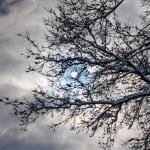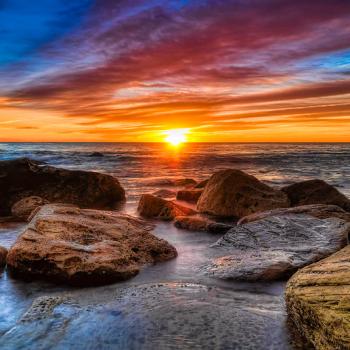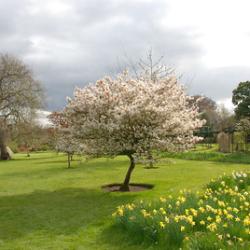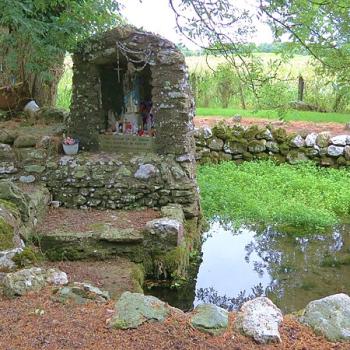
Introduction
Contemporary Paganism is deeply rooted in a European past. For all of us who have some European heritage, those ancestors were pagan before the introduction of Christianity. Although modern Pagans draw on many non-European sources including the ancient beliefs and practices from Egyptian, Roman and Greek, Asian, Native American and African cultures, the native religions of pre-Christian Europe are our own heritage.
In this series, I will use the Wheel of the Year used by many modern Pagans to explore seasonal practices that you can incorporate into your life. I am using the generic descriptions of the seasons as if they apply to everyone. I know that they don’t. If you don’t live in North America or Europe, or if you live in certain areas of the United States, some of these descriptions of the seasons won’t make sense to you. Feel free to adjust my suggestions based on your own environment.

Yule (Winter Solstice)
Yule (December 20) is the pagan holiday that has been most integrated into secular culture. Much of what we Americans think of as Christmas rituals, practices, and symbols actually come from various pagan winter holidays around the time of the solstice. In fact, the date celebrated by Christians for their winter holiday was probably chosen to coincide with the Roman celebration of Dies Natalis Solis Invictus, the birthday of the Unconquered Sun as well as the revelry of Saturnalia.
The solstice is the longest night of the year when the sun has moved to the farthest point in its southern journey. Many pagan rituals including a calling back of the light along with the celebration of the conception or birth of the sun child. If Samhain was the end of the Pagan year, Yule is its beginning, a time of the unconscious, deep hibernation when old ways of being and acting might be discarded to prepare for a new solar cycle.
The colors of this season are the blue and white of snow and frost, as well as red and green of holly and other winter trees and plants. Since many of the symbols of the Christmas season are not Biblical but have been appropriated from different Pagan societies, modern Pagans can take them back and incorporate them into their own celebrations. These include evergreen trees and wreaths, gift giving, feasting, singing and dancing, candles and all the bright shiny decorations that remind us that the light will return.
This is the time of gestation and rebirth, a time to remember the darkness of the womb that nourishes and creates new life. We too can plant the seeds of our hopes and dreams, and nourish our visions of love, joy and peace. For out of the darkness, new light is born anew. This is also the time to enjoy the pleasures of hearth and home, to tell the stories of our lives and those of our families. In some ways, the days between Thanksgiving and the New Year are the most hectic time of the year with feasting, decorating, gift giving, parties and celebrations. But this can also be a good time to step back and enjoy the long, dark nights. Taking time to read or write or create, to sing or dance, to see within ourselves that which we might ignore in brighter times.
This year especially, we may need to embrace the darkness while planting the seeds of the future. It is a time to re-consider old rituals and create new ones. Perhaps we will share our feast with the birds and wild animals instead of traveling to or welcoming distant family. Perhaps we will need to reconsider our ways of celebrating and embrace a more solitary practice appropriate for this dark time.
Yule Rituals
Many of us have one or more boxes of seasonal decorations that we bring out each year and place together, always in the same way. Since everything is different this year, you might want to spend time reconsidering your seasonal practices. Perhaps you could turn a single room or even your entire home into special ritual space. Think first of the directions. East is the direction of air, south fire, west water and north earth. But you don’t have to be tied to those correspondences. Be creative. Perhaps you’ll make your living or family room the area of family, fire. The nominal South. A bathroom might embody West, water. The kitchen, home of food and nourishment might become North, the earth. Your bedroom, craft space, study, office or other special space, can be the East, Air. Make these spaces work for you, even if they don’t lie on the “right” compass points. Now make each space its own season altar, scattering your decorations throughout the house according to each room’s designation. Include your immediate family or housemates in this new scheme. Make it an adventure.
While you’re doing, or even thinking about this, you might create your own opposition. “I can’t put that in the bathroom,” you’ll tell yourself. Avoid absolutes. Remember, for this one time, only you and your immediate family will see what you’re doing. If you’re quarantining as you should, you won’t have to justify your choices to your extended family, friends or acquaintances. You can do what feels right.
When you’re done, use your own words to call the directions in each part of your home. Remind yourself of what energy you’ve placed in each space and what you want to manifest over this season of darkness and new life. You can end your invocation with something like “This circle is sealed, and all herein are completely and totally apart from the outside world.” When you finish, you will have turned the room or your entire home into sacred space. Although you can do special rituals for the Solstice and other seasonal holidays, now everything you do during this time can become part of your sacred practice.


















